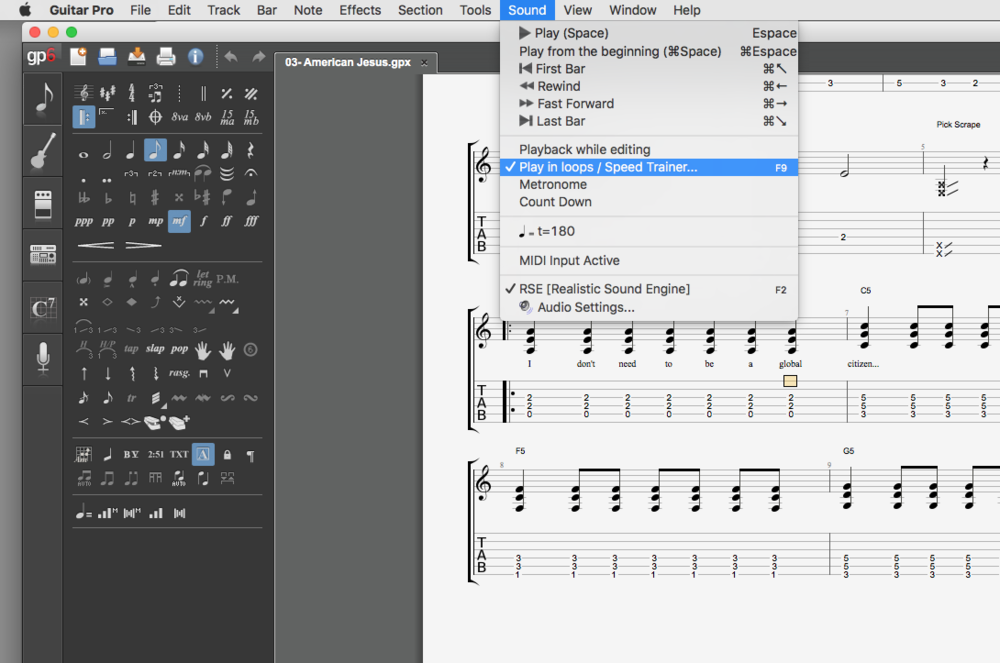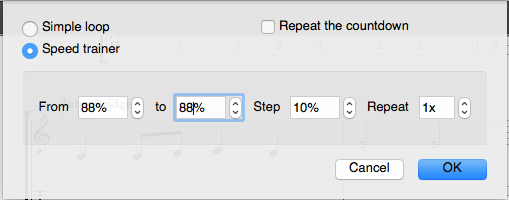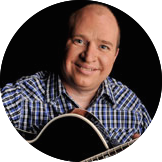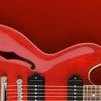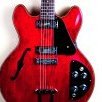-
Posts
95 -
Joined
-
Last visited
-
Days Won
5
Content Type
Profiles
Forums
Gallery
Events
Articles
Blogs
Downloads
Community Map
Everything posted by guitarben
-
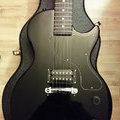
Traynor Amp Drop.. will it still work
guitarben replied to Eracer_Team-DougH's topic in Guitar Gear, Amps, Effects, Pedals
Wow very interesting and information, thank you Doug! -
Here's a very interesting article from Justin Beckner at Ultimate Guitar. It's also nice to see the specific color history at the end. Pros And Cons Of Popular Guitar Finishes Lacquer or Poly? Once a guitar has been built, it will generally get a finish of some sort. In this article, we will discuss the reason for a finish on your guitar and some of the more common types of finishes we see. The finish of a guitar is something that is much more important than simple aesthetics. Although it’s true that a guitar’s finish can be used to enhance the natural beauty of the woodgrain, a guitar’s finish is meant to seal the wood, first and foremost. Lacquer vs. “Poly” The two most common guitar finishes are lacquer and “poly”. The debate on which one is superior rages on in forums across the internet. The truth is that both have pros and cons. There are several types of lacquer finishes but, when we are talking about guitars, we are generally talking about either acrylic or nitrocellulose paint. This is the stuff we use on our vintage instruments. Back in those days, we borrowed a lot from the automotive industry. Not only the process and technique of painting, but the colors too. You might have noticed that a lot of the classic Fender colors are very similar to the colors used by GM, Cadillac, and Ford back in the 50’s and 60’s [more on that later]. Nitrocellulose paint is really some nasty stuff for the environment and for our health. I sprayed my fair share of this paint on guitars and cars over the years and I can attest to the fact that if you don’t wear proper masks and safety gear, you will regret it later in life. If you’re going to be spraying any kind of paint, especially nitro, get yourself a good respirator and wear it. Still, nitrocellulose paint is still preferred by a lot of people. It is historically correct in terms of what was used on vintage guitars. Nitrocellulose paint will also age and wear and is great for players who like the road worn or patina look. It is a much softer finish than poly and is often thought to let the wood breathe and age (dry out). Because lacquer goes on much thinner, it is said to give the instrument a more natural tone. The first time I sprayed a lacquer on a guitar, I was surprised by how thin it went on. I had to apply a LOT of coats before I could buff it down to a smooth finish. So it requires a little more prep to the wood before you apply it. Nitrocellulose lacquer can also crack when the wood expands and contracts. I live in northern Minnesota where we can have swings of 80 degrees within the span of a few days and humidity fluctuates drastically between summer and winter. Poly finishes don’t typically get this effect because it protects the wood from these changes in humidity, particularly. Many guitar companies started moving away from lacquer finishes in the mid to late 60’s. One of the most popular substitutes was polyurethane, today it seems just about any non-lacquer finish is referred to as a “poly” finish. Poly-based can be thought of as plastic-based finishes. It goes on very smooth and is much more durable and are less prone to aging. These finishes are pretty much the same stuff you’d find on a bar top or a gymnasium floor. The reasons for the move from lacquer to poly finishes are easy to find, poly is cheaper, safer, and easier to apply. For companies that mass produce their instruments, this was a huge bonus. Some of the guitars I’ve shot with poly paint, I just use a one-stage equipment enamel that you could buy at any paint shop. Critics of poly finishes will cite that the thicker finish diminishes and dulls the guitar’s tone (natural resonance). It doesn’t age the wood because it holds in whatever moisture was still left in the wood. Another thing that critics (and techs) don’t like about poly finishes is that it is often very difficult to repair finishes such as dents and scratches. The poly doesn’t match up as well as the lacquer finishes do. How much can a guitar’s finish effect the tone? The answer is, as always, it depends. If we were to paint a guitar the same way we paint a car, we would first seal it, then we would spray some sanding primer down, often times this requires several coats, most of which gets sanded off. This is to ensure a smooth surface. On vehicles, I’ll get all the way down to 600 grit sandpaper when sanding this down. Having a smooth finish becomes even more important when the color you’re spraying is a solid dark color. Black, for example shows any little imperfection in the body. Once you’re content with the smoothness of the body, you can spray your paint on there. You can use a “rattle can” – your standard hardware store spray paint. But generally professionals will use a paint gun and spray it that way. We talked about the two big ones – lacquer and poly, but I would be remiss if I didn’t mention oil finishes. Tru-Oil, Tung Oil, Danish Oil are the products most people use. It’s not a bad product, it is commonly used to finish all sorts of wood such as gun stocks and vintage furniture. It does a nice job of enhancing the grain of your guitar. It’s fairly easy to apply. People like to use this on the necks of their guitars. Where do all these colors come from? Let’s talk about colors for a moment. Most of my painting experience comes from painting classic cars. So it’s no surprise to those who know me that I’m very interested in the origins of some iconic colors that have been used on guitars over the years. I should point out that it’s not all about the color, it’s also about the application techniques, the primer, and other factors that can affect the color and texture of the finish. But as for the base colors, most of them were taken directly from color books of major car manufacturers. Fiesta Red, for example, a common color used by Fender instruments such as the iconic 1962 Stratocaster, was a color with the DuPont code 2219-H. It was available on the 1956 Ford Thunderbird and Fairlane models. “Surf Green” was a Chevy color in 1957 while “Foam Green” was a color Buick used in 1956. Colors like Lake Placid Blue (Metallic), Daphne Blue, and Sonic Blue were all colors used by Cadillac in the late 50’s. Olympic White, Dakota Red, and the Metallic Firemist Gold and Silver were also Cadillac colors. Interestingly enough, we still don’t know which Black Fender used back in those days. Most people believe it closely matches the Black Corvettes used in ’54 and ’58 or Cadillac in ’58. It’s pretty much impossible to figure out which one Fender actually used. Fender decided to discontinue painting guitars Fiesta Red, Dakota Red, and Foam Green in 1969. Candy Apple Red was a custom color that used a metallic base coat, a translucent color coat, and a clear top coat. It was later applied to The Ford Mustang in 1966. Gibson was no stranger to sharing colors with the auto industry. Their Golden Mist color is a ’59 Oldsmobile color. The GoldTops used a nitro clearcoat with a crescent bronze powder mixed in (DuPont code #256 is the code for the powder, in case you were wondering). Mixing powder (or metal flake) into clearcoats is a pretty common practice but can be tricky to do and requires some training or experience shooting that sort of paint.
-

Traynor Amp Drop.. will it still work
guitarben replied to Eracer_Team-DougH's topic in Guitar Gear, Amps, Effects, Pedals
Thank you for posting this! I'm canadian and I didn't even know that Traynor amps are canadian or the connection with Long & McQuade... -
Let us know how it goes!
-
Here's what Steve said about this. This is part of the Guitar Words of Wisdom thread compiled here by @Eracer_Team-DougH If you only read one thread it should be this one, it's FULL of information about the entire course. Some information will only apply to later sessions.
-
If I recall correctly he plays it at 2 different speeds on the dvd. The last one is the real challenge; that's the one at about 140bpm but he really speeds up at one point.
-

Fretwire LP Guitar Build Thread
guitarben replied to Old Guy's topic in Guitar Care, Repair & Building
Thanks for posting your progress, I subscribed and I am looking forward to see your progress! And of course to hear it... -
Most metronome apps have a Tap button that will tell you the tempo as you tap the beat on it. It's usually easier to use the clicks at the beginning to do that. If I recall correctly for Chattahoochee the last version on the dvd is about 140 bpm. While I also do the same thing than you and get comfortable with the metronome before playing along, for this one I recommend that you try the dvd earlier. This will help you get used to the rhythm when Steve plays it slower as the last one is very fast and has a lot of syncopation; the metronome will only get you so far on this one. I'm actually surprised that this song doesn't come up more often on the forums... it's quite a challenge, but it's very fun to play!
-
Great idea for a thread! Here is one with John Lennon that has been on my favorites list for a few years; if you haven't seen it it's definitely worth a watch. Although not about guitar, the fact that it was done by a 14 year old who snuck in Lennon's hotel for an interview makes it quite unique, and the animation really adds to it. Here's the full story:
-
I have the same issue, I just visit the forum without logging in. The version of captcha used on the site expired in March 2018 and they never bothered to fix it. This means that there has been no password recovery and no new users signing up since then.
-
It's a long way to the top (if you want to rock n roll)! Congrats on your first gig, we salute you.
-

A small mod to suit my playing style more
guitarben replied to Ice9's topic in Guitar Gear, Amps, Effects, Pedals
So this is actually your guitar and it's not photoshopped? Now that is funny! -

Slowing Tempo in Guitar Pro
guitarben replied to matonanjin's topic in Guitar Gear, Amps, Effects, Pedals
Great! -

Slowing Tempo in Guitar Pro
guitarben replied to matonanjin's topic in Guitar Gear, Amps, Effects, Pedals
Sure thing! Glad I could help! -
This arrangement was so popular on Youtube that it literally propelled his career. Here's an interview where he explains his technique very well.
-

Slowing Tempo in Guitar Pro
guitarben replied to matonanjin's topic in Guitar Gear, Amps, Effects, Pedals
The way I do it in Guitar Pro 6 is with the Speed Trainer option. I never found a better option and I always thought it was strange that you can't just enter a speed percentage. Go in the Sound menu, then Play in loops / Speed Trainer (or press F9). The option window pops up only when you activate it, so if it's already checked you'll have to select it twice. From there enter the same value in From and to, although the 2nd value only takes effects when it repeats from the beginning. You cannot put 0 repeat, so it will start over at the end. Hope this helps! -
I did not know. Very sad news.
-
Wow there is a lot of talent on this site! Well done everyone, that was very interesting to listen to!
-

Georg Harrison's First Guitar Up For Auction
guitarben replied to matonanjin's topic in Guitar Gear, Amps, Effects, Pedals
The Tele does seem more reasonnably priced, but I'm also a huge fan, especially of Bob Dylan. I actually named my son Dylan after him. I'm also a huge Beatles fan, and the autographs of the 2 Beatles that passed away surely add value. However, appart from being George Harrison's first electric guitar it was not part of anything major in history; I have never seen a picture of George with it (even from the Quarrymen era) and in interviews he always talks about his actual first guitar: an acoustic that his mom bought for him. Regardless of the condition, it's great that it survived. If someone's willing to pay, then it's not too expensive. It's hard to tell with collectibles, you never know how crazy the interest will be. Kirk Hammett paid $2M for Peter Green's 1959 Les Paul and he plays it at every concert. I looked into it and found a very interesting list of The 60 most valuable guitars ever sold at auction. I wanted to list a few, but you should really check it out as they are all really interesting and it turned out to be a great read; I couldn't even pick just a handful to list here. Out of 60, only the top 27 fetched more than $300,000. The "cheaper" ones include John Lennon's first guitar, a few of Clapton's, Jimi's Strat from Monterey, the first Les Paul (owned by Les Paul), a few of Jerry Garcia's most famous guitars, Elvis' guitar between 1954 and 1956 (the Sun sessions), Hank Williams' main guitar and much more. Wow sorry for the long response, but thanks for making me wonder how much it might actually be worth, that list was really interesting.




